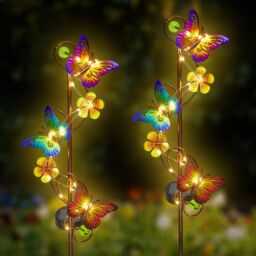There are many differing opinions when it comes to graffiti. At one end of the spectrum are those traditionalists who still believe that it is irresponsible and anti-social. At the other end is an emerging counter-belief that regards it as an art form, particularly after its popularization by the infamous street artist Bansky.
A more palatable form of graffiti art is light painting. Pioneered by American artist Man Ray in the early 1900s, this temporary form of graffiti art has found an increasing number of followers over the years due to its more ethical approach.
For anyone who doesn’t know, light painting is a method of drawing with a hand-held light source and a long exposure camera. Armed with a torch, maglite, glow stick or even a mobile phone, an artist stands in front of the camera. After the camera’s shutter opens, the artist has a 10-15 second window of opportunity in which to trace an image through the air. The movements are captured by the camera and appear as bright streaks on the resulting photograph. While the actual method is not much to behold, the final products are visually stunning.
The latest trend in light painting is the “light wand,” a luminous rod originally designed by artists who wanted to create visual landscapes using urban Wi-Fi signals. Since then the light wand, which has been affectionately named the LightScythe, has been adopted by the graffiti community in order to create floating pixelated images.
The hardware behind the instrument is actually quite basic and can be purchased at any normal electronics outlet. A 2 metre length of colour changing RGB LED Tape is inserted into an acrylic tube. A laptop is used to communicate with the LED Tape via a wireless receiver hook up. And the entire set up is powered by a battery pack. The finished article actually closely resembles a light sabre.
Image data, which is created using open source software, is sent from the laptop to the LightScythe via a wireless Xbee link. The scythe is dragged through the air in a single sweep as the LEDs flash in concordance with the data they receive.
Although a little less portable than a flashlight, the results achieved with the LightScythe suggest that it is definitely worth the extra bit of effort. Even better, instead of buying a patent, the LightScythe’s creator, who calls himself The Mechatronics Guy, has made the software and instructions available for all. That means you can go and make your own LED Tape Lighting.
AUTOPOST by BEDEWY VISIT GAHZLY

